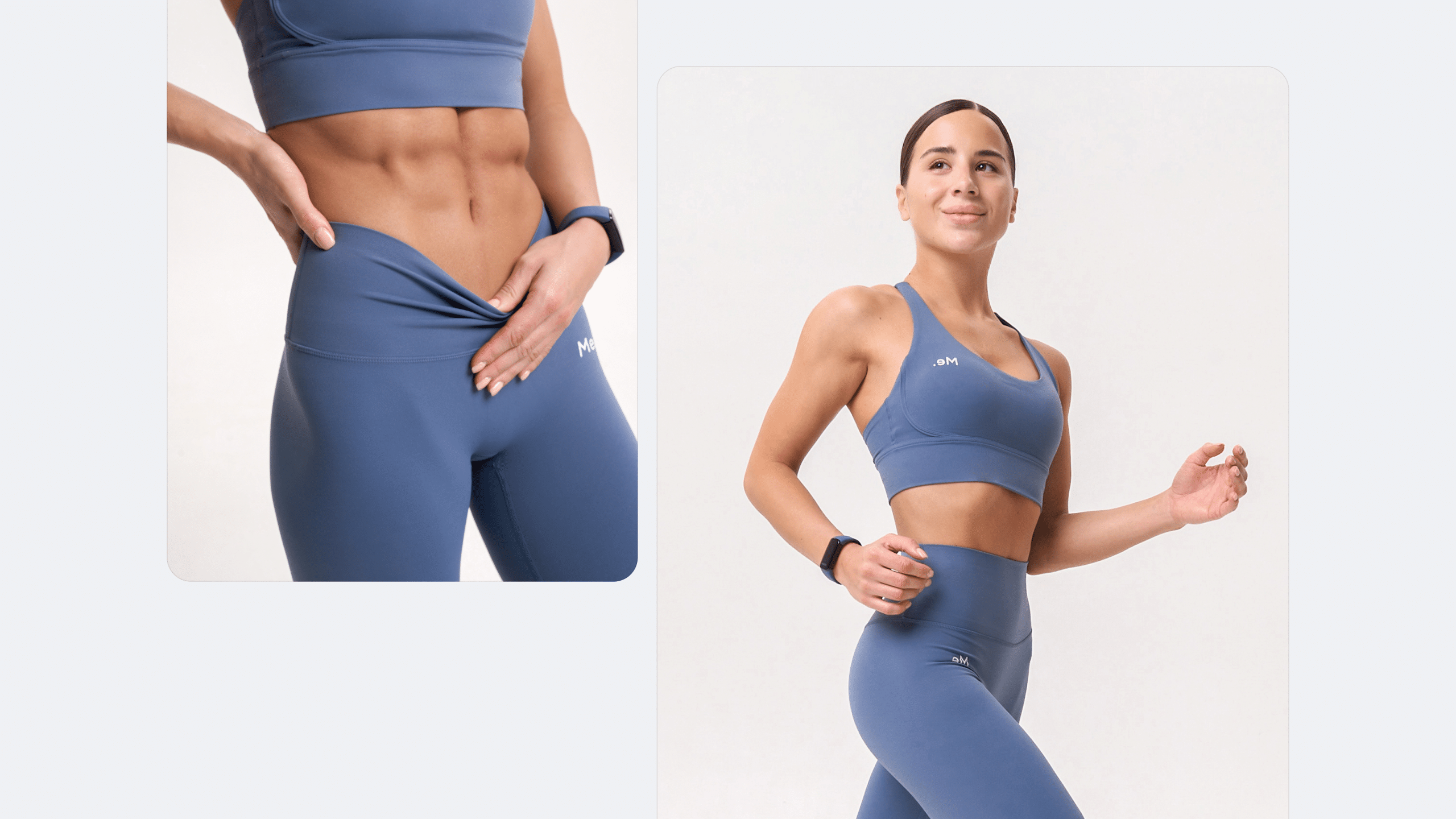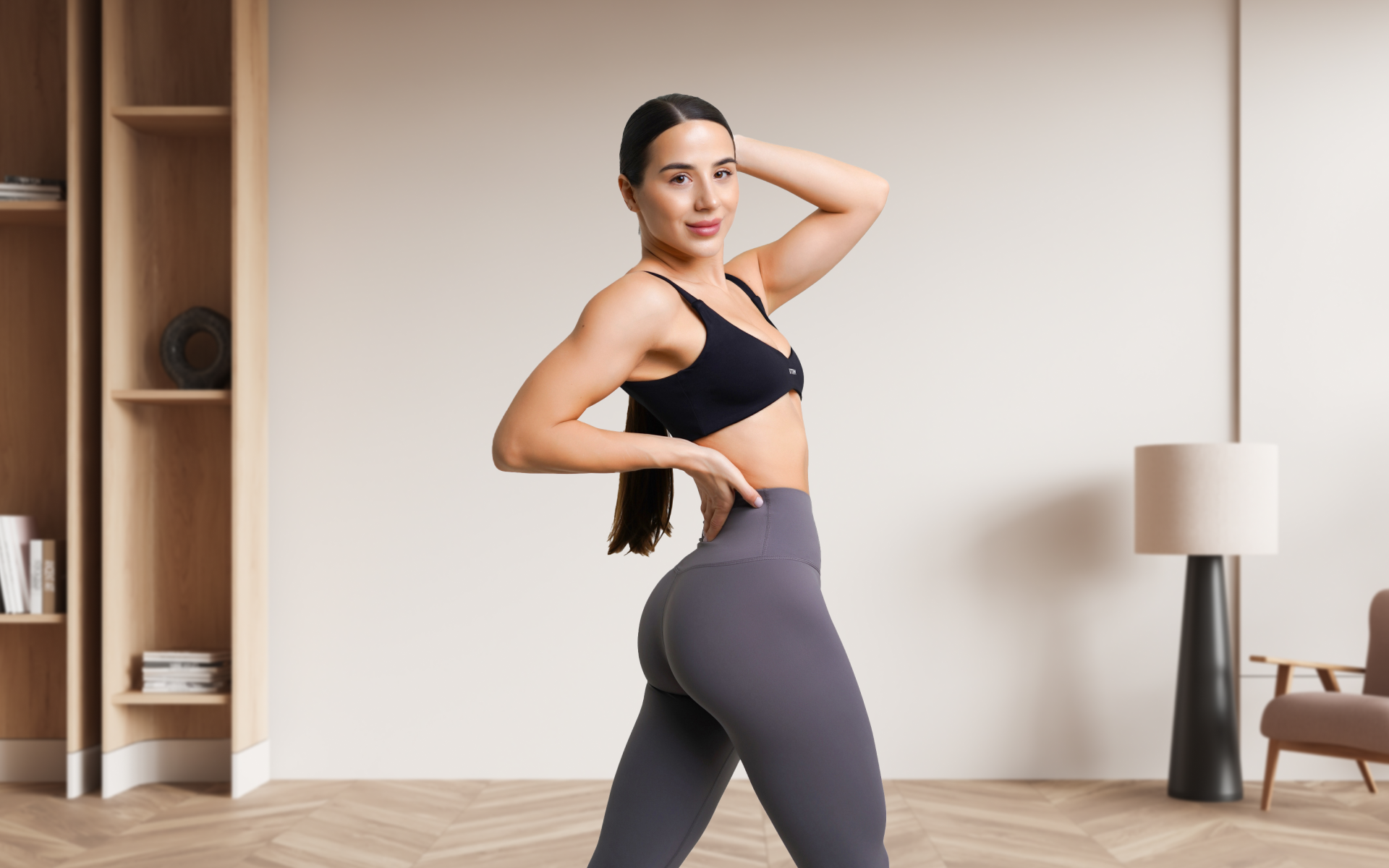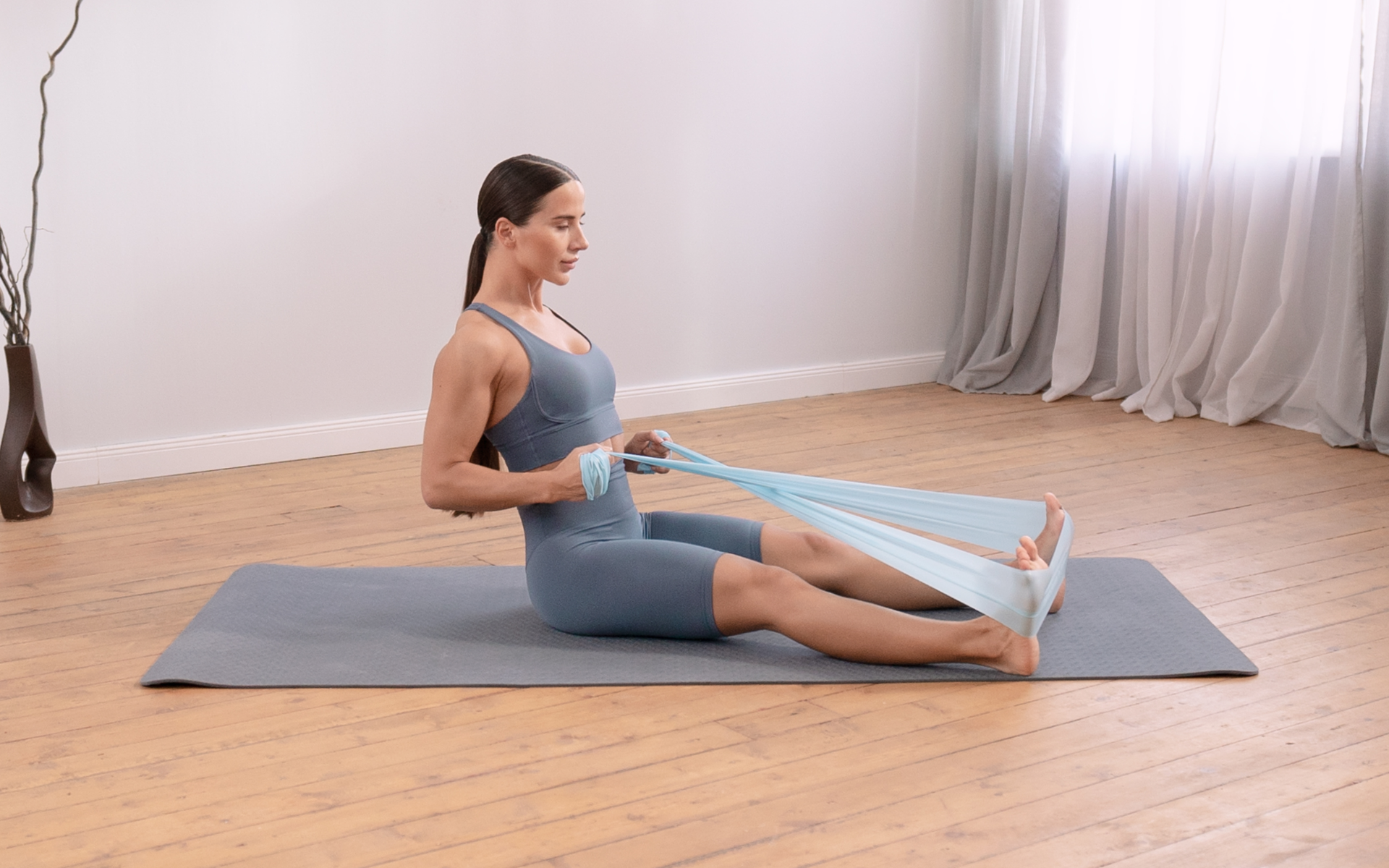When it comes to working out, one of the most important success factors is having a well-structured workout split. This refers to dividing your weekly workout routine into different training days, each targeting different muscle groups or fitness goals.
A calisthenics workout split is no exception to this rule. Calisthenics, also known as bodyweight training, uses the resistance of your own body to build strength and muscle (5) (10). It is a great form of exercise for those looking to improve their overall fitness or even work towards specific goals such as mastering advanced bodyweight movements like the handstand or planche.
In this guide, we’ll walk you through the steps of designing your own calisthenics workout split for you to make the most out of your training.
Should I Train Full Body or Split Calisthenics?
Choosing between full-body workouts and split routines in calisthenics largely depends on your fitness goals, experience level, schedule, and recovery capacity. It is important to note that both result in increase in muscle volume and strength (1) (9).
Here’s a breakdown to help you decide:
Full-Body Workouts
Pros:
- Efficiency: Ideal for those with limited time, as you work your entire body in a single session, typically 3 times a week.
- Balanced Development: Ensures you’re working all major/large muscle groups equally, reducing the risk of muscular imbalances. (adding in major/large muscle groups because even with a well rounded full body routine you may not be working some of the smaller muscles at a similar rate. For example, elbow flexion is involved in many upper body exercise movements (presses, curls, pulls etc.) and even with a well rounded full body routine these muscles will be used a lot when working with the upper body. As opposed to chest or back specific exercises.)
- Flexibility in Scheduling: Missing a workout is less impactful since each session engages the whole body.
- Increased Frequency: Hitting all muscle groups multiple times per week can lead to proper (as opposed to better, as split workouts can be just as beneficial) strength and muscular development over time.
Cons:
- Recovery: It can be more challenging to recover from, especially for beginners or those at an advanced level pushing high intensities.
- Workout Length: Sessions can run longer since you’re covering the entire body.
- Potential for Overtraining: Without careful monitoring, increased frequency can lead to overtraining certain muscle groups which can also lead to an increased risk of injury
Split Routines
Pros:
- Specialization: Allows for focused attention on specific muscle groups, which is great for addressing weaknesses or achieving aesthetic goals.
- Volume and Intensity: You can dedicate more time and exercises to each muscle group, potentially leading to greater hypertrophy.
- Recovery: By rotating muscle groups, you allow more recovery time for each group before it’s worked again. (which may be more beneficial for beginner’s due to the lack of ability for a beginner to recover from a full body workout in comparison to an advanced exerciser)
- Variety: Can prevent workout monotony by changing up the muscle groups and exercises each day.
Cons:
- Potential for Imbalance: Without a well-structured plan, there’s a risk of neglecting certain muscle groups.
- Requires More Frequency: To hit all muscle groups adequately, you’ll likely need to train most days of the week.
- Complexity: May not be as straightforward for beginners who are still learning the basics of calisthenics movements.
Dropping pounds by the dozens without putting yourself through the wringer is everyone’s weight loss pipe dream. But what if we told you that the BetterMe app can make that happen? Keep yourself in prime shape with our fat-blasting workouts, delicious budget-sparing recipes, and body-transforming challenges with our app!
Making Your Choice:
- Goals: If general fitness and time efficiency are your priorities, full-body workouts might be best. If you’re aiming for muscle mass or specific aesthetic goals, a split routine could serve you better.
- Experience Level: Beginners might benefit from the simplicity and balanced development of full-body routines. More experienced practitioners could leverage split routines for targeted improvements.
- Lifestyle and Preferences: Consider how many days and the amount of time you can realistically commit to training and whether you prefer variety or consistency in your workouts.
Both approaches have their merits, and some athletes even combine them, alternating between full-body and split routines over different training cycles to enjoy the benefits of both. The best choice is the one that fits your personal preferences, lifestyle, and goals while allowing for consistent progress and adequate recovery.
In our, Core Calisthenics workout program, we offer both full-body and split routines to cater to different needs and goals. Whichever path you choose, remember that proper programming is crucial for long-term progress in calisthenics.
What’s The Most Effective Workout Split?
The Push/Pull/Legs split stands out for its balance between frequency, intensity, and recovery time, making it highly effective for both muscle gain and strength. It’s versatile enough to accommodate various training frequencies, whether you prefer to train 3, 4, or 6 days a week, depending on how you structure it.
Even so, various effective workout splits cater to various objectives like muscle growth, strength gain, athletic performance and overall fitness improvement. The most effective workout split largely depends on your fitness goals, experience level, and schedule.
Here’s a brief overview of the most recommended splits:
Total Body Hypertrophy Split
This routine involves training all major muscle groups in a single session, typically recommended 2-3 times per week with rest days in between.
Good for beginners or those with limited time, aiming for overall fitness improvement.
Example from the guide: Day 1, all muscle groups—1 exercise, 3 sets, 10-12 reps; rest on Day 2, repeat on Day 3, rest on Day 4, and so forth.
Upper Body Only Push/Pull Split
Segregates workouts based on movement patterns—pushing exercises one day (chest, shoulders, triceps) and pulling exercises the next (back, biceps).
Allows for more frequent training by reducing the overlap of muscle group usage, making it suitable for intermediate lifters. (This description does not include legs and I would make note of this being an upper body Push/Pull split. Additionally, I would add in a rest day (Push/Pull/Rest) just for further clarification)
Read more: The Simplest Lower Back Calisthenics Guide for Beginners
Push/Pull/Legs Split
Further divides the training into pushing muscles (chest, shoulders, triceps), pulling muscles (back, biceps, forearms, abs), and leg muscles.
This split can be conducted over 3 to 6 days, allowing each major muscle group adequate recovery time while enabling frequent stimulation for growth.
Bro Split/ Bodybuilder Split
Involves dedicating each day of the week to a single muscle group (e.g., chest on Monday, back on Tuesday, etc.).
While very common in the bodybuilding traditional exercise realm, this split is often criticized for its potentially insufficient frequency for optimal muscle growth in natural athletes but remains popular for its simplicity and focus on intensity per muscle group. It also tends to not be the best route for most beginners as this is geared toward a seasoned weightlifter who already has a fair amount of muscle development and is ideally looking to isolate certain muscles in order to increase their size and appearance.
6 Day Workout Split
For those looking to maximize their training volume, a 6-day split allows for detailed focus on two major muscle groups per day, such as upper body push focus (chest and triceps) on Monday, upper body pull focus (back and biceps) on Tuesday, and legs on Wednesday, with the cycle repeating or varying the focus for the latter half of the week. Additionally, leg days can be split up similarly to how upper body push/pull is split. Wednesday leg day could be lower body pull dominant (hamstring and glutes) while Saturday could be lower body push dominant (quads).
What Is The Best Split for Calisthenics?
The best split for calisthenics takes into account all major muscle groups, frequency, intensity, and recovery.
The general calisthenics consensus favors full-body training multiple times a week for beginners and intermediates. (From my understanding, this previous sentence would suggest 3 full body training sessions rather than the Push/Pull/Leg split that is being described/outlined below. Given that, I have made adjustments to include a 3 day split that alternates rest days.) However, some natural athletes achieve impressive results with split routines by manipulating the volume and intensity to suit their goals.
For purposes of this guide, we’ll focus on the 3-Day Workout Split, also known as the Big 3.
The 3 day calisthenics workout split follows a push/pull/legs system. Each day in between will have an active recovery/ rest day immediately after the strength training day.
The third day focuses on leg training and core work but can be adapted to fit individual preferences.
Day 1 Monday: Push
Chest Exercises:
- Push-Ups (3 sets of 10-12 reps)
- Decline Push-Ups (3 sets of 10-12 reps)
- Dips (3 sets of 8-10 reps)
- Diamond Push-Ups (3 sets of 8-10 reps)
- Pike Push-Ups (3 sets of 6-8 reps)
- Handstand Push-Ups (3 sets of 6-8 reps)
- Shoulder Presses (3 sets of 8-10 reps)
- Dumbbell Flys (3 sets of 10-12 reps)
Tricep Exercises:
- Tricep Extensions (3 sets of 8-10 reps)
- Tricep Dips on Bench (3 sets of 10-12 reps)
- Close Grip Push-Ups (3 sets of 8-10 reps)
- Tricep Kickbacks (3 sets of 10-12 reps)
Rest 1 Tuesday: Rest or Active Recovery
This day can be used for rest or active recovery, such as a light jog or stretching session.
Want to build an attention-grabbing bubble butt, blast away fat that’s stored in all the wrong places, spring-clean your diet, turn back the clock on your skin, skyrocket your self-confidence and shatter your insecurities? Check out the BetterMe app and set this plan in motion !
Day 2 Wednesday: Pull
- Pull-Ups (3 sets of 8-10 reps)
- Inverted Rows (3 sets of 8-10 reps)
- Wide Grip Pull-Ups (3 sets of 6-8 reps)
- Tuck Front Lever Rows (3 sets of 6-8 reps)
Bicep Exercises:
- Chin-Ups (3 sets of 8-10 reps)
- Bicep Curls (3 sets of 8-10 reps)
- Hammer Curls (3 sets of 8-10 reps)
- Inverted Pull-Ups (3 sets of 6-8 reps)
Rest 2 Thursday : Rest or Active Recovery
This day can be used for rest or active recovery, such as a light jog or stretching session.
Day 3 Friday : Legs and Core
Leg Exercises:
- Squats (3 sets of 10-12 reps)
- Lunges (3 sets of 8-10 reps on each leg)
- Calf Raises (3 sets of 12-15 reps)
- Bulgarian Split Squats (3 sets of 8-10 reps on each leg)
Core Exercises:
- Planks (3 sets, hold for 30 seconds each)
- Bicycle Crunches (3 sets of 20 reps)
- Leg Raises (3 sets of 12-15 reps)
- Russian Twists (3 sets of 20 reps)
This split allows for a balanced training of all major muscle groups while providing adequate recovery time in between. It can be easily adjusted by adding more sets or reps to progress or incorporating variations to challenge your body and avoid plateaus.
In our, Calisthenics for Beginners at Home, we further break down each exercise and provide demonstrations to ensure proper form, technique, and progress tracking.
Is 20 Minutes of Calisthenics Enough?
20 minutes of calisthenics can be enough, depending on the intensity and focus of your workout. If you’re short on time, a high-intensity 20-minute session can still provide for an effective full-body workout.
However, for optimal muscle growth and strength gain, it’s recommended to gradually increase your workout time and incorporate variety to target all muscle groups adequately (8).
According to the American College of Sports Medicine, adults should aim for at least 150 minutes of moderate-intensity exercise each week (6). This translates to 30 minutes a day for five days a week or 20 minutes a day for seven days a week.
Read more: Calisthenics Shoulder Exercises: Techniques and Workouts
FAQs
Should I Do 3 or 4 Sets of Calisthenics?
For beginners, it’s recommended to start with 3 sets and gradually increase to 4 as you progress. For muscle growth, a higher volume (rep range of 8 to 12 sets ) is generally more effective (3). However, too much volume can lead to overtraining and hinder progress (4). Listen to your body, stay within your goals and adjust the volume accordingly.
How Many Sets Is Best for Calisthenics?
Depending on the intensity and focus of your workout, 3-5 sets per exercise is generally recommended for muscle growth and strength gain (2).
The Rate of Perceived Exertion (RPE) scale can be used to determine the appropriate number of sets for your calisthenics workout. On a scale of 1-10, with 1 being very easy and 10 being maximum effort, aim for an RPE of 7-8 (7). This means you should feel like you have one or two more reps left in the tank at the end of each set.
What Is The 3 2 8 Method?
The 3 2 8 method is a calisthenics training technique that involves performing (I believe this should be: three sets of two different exercises with eight repetitions each. Unless it is referring to a different method that BetterMe suggests?). This allows for more volume and intensity per muscle group while reducing the risk of overtraining. It’s recommended to use this method with compound exercises such as pull-ups or push-ups.
In our, Core Calisthenics guide, we break down the 3 2 8 method and provide examples of exercises that can be incorporated into your routine.
The Bottom Line
The best split for calisthenics depends on individual goals and preferences. The 3-Day Full Body Workout Split is an excellent starting point for beginners looking to build overall fitness and can be adapted for more advanced athletes. Structure your calisthenics split to incorporate all major muscle groups, frequency, intensity, and recovery time for optimal results.
DISCLAIMER:
This article is intended for general informational purposes only and does not serve to address individual circumstances. It is not a substitute for professional advice or help and should not be relied on for making any kind of decision-making. Any action taken as a direct or indirect result of the information in this article is entirely at your own risk and is your sole responsibility.
BetterMe, its content staff, and its medical advisors accept no responsibility for inaccuracies, errors, misstatements, inconsistencies, or omissions and specifically disclaim any liability, loss or risk, personal, professional or otherwise, which may be incurred as a consequence, directly or indirectly, of the use and/or application of any content.
You should always seek the advice of your physician or other qualified health provider with any questions you may have regarding a medical condition or your specific situation. Never disregard professional medical advice or delay seeking it because of BetterMe content. If you suspect or think you may have a medical emergency, call your doctor.
SOURCES
- A randomized trial on the efficacy of split-body versus full-body resistance training in non-resistance trained women (2022, biomedcentral.com)
- Built to Order: Strength and Size Considerations (n.d., blog.nasm.org)
- Maximizing Muscle Hypertrophy: A Systematic Review of Advanced Resistance Training Techniques and Methods (2019, ncbi.nlm.nih.gov)
- Overtraining Syndrome (2012, ncbi.nlm.nih.gov)
- Protocol for Minute Calisthenics: a randomized controlled study of a daily, habit-based, bodyweight resistance training program (2020, biomedcentral.com)
- Quantity and Quality of Exercise for Developing and Maintaining Cardiorespiratory, Musculoskeletal, and Neuromotor Fitness in Apparently Healthy Adults (2011, journals.lww.com)
- Relationship between the rating of perceived exertion scale and the load intensity of resistance training (2018, ncbi.nlm.nih.gov)
- Resistance training – health benefits (2022, betterhealth.vic.gov.au)
- Split or full-body workout routine: which is best to increase muscle strength and hypertrophy? (2021, ncbi.nlm.nih.gov)
- The advantages of body-weight exercise (2022, health.harvard.edu)









